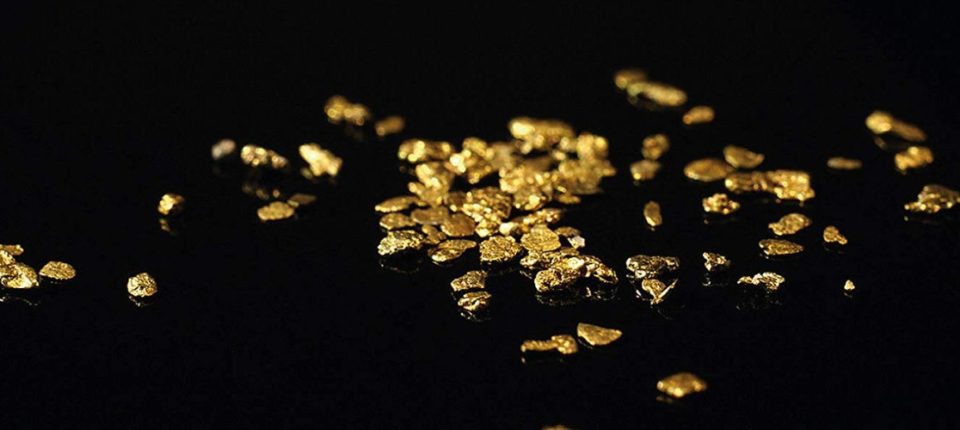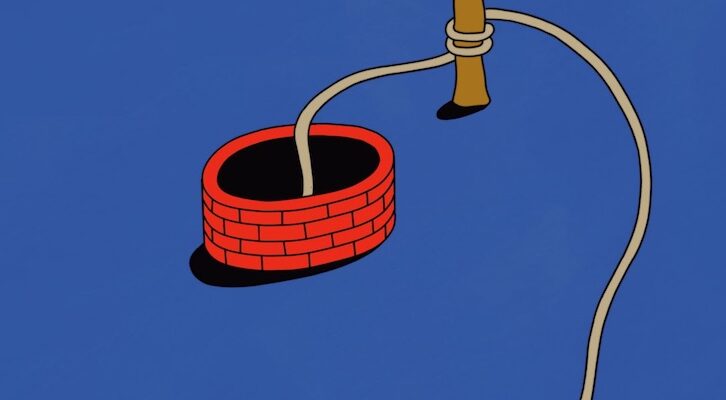Juan Pablo Granda stepped into a small office in a middle-class neighborhood in the permanently foggy city of Lima, Perú, on February 18, 2013.
The lights were off.
He couldn’t see.
As his eyes adjusted to the darkness, Granda began to make out menacing shapes: two men, short and squat, with handguns strapped to their hips. Behind them, their boss sat at a desk. A single-barreled shotgun leaned against the wall.
Granda, a thirty-one-year-old Florida State University graduate with degrees in international business and management, wasn’t there to buy cocaine or weapons, as the room’s bristling tension might suggest.
He was there to buy gold, the metal that has mystified, entranced, and led human beings to destroy themselves since the dawn of time. The office belonged to one of the biggest gold exporters in Perú, a developing South American nation where precious-metals brokers sometimes operate more like drug dealers than suit-and-tie commodities traders. Where Africa has its “blood diamonds,” Perú and its neighbors in South America have “dirty gold”—and much of it ends up in jewelry and electronic goods purchased by unsuspecting consumers in the United States.
The metal Granda sought is produced by a little known and incredibly destructive criminal economy fueled by the cocaine trade. Under the nose of governments and law enforcement agencies around the world, dirty gold has infiltrated the global precious-metals industry.
Deep in Perú’s Amazon rain forest, tens of thousands of struggling wildcat miners use backhoes, pickaxes, and high-powered hoses to rip the metal from pristine jungle riverbanks and toxic mercury to strip it from rock. Violent drug traffickers and other criminal gangs control many of the mines and smuggling routes. Mining camps are overrun by vermin and disease. Women and children are coerced into the sex trade to serve the hard-living miners, who travel from Perú’s mountains and coasts to find some of the most lucrative work available in this country of 32.5 million people. Nearly half of the people who live in Perú’s rural highlands, along its jungle rivers, or on the edges of its subtropical deserts do so in poverty, many without running water, electricity, or basic healthcare. Illegal gold mining is one of the best ways out.
The miners have turned an area in Perú’s southeastern rain forest known as La Pampa into one of the hemisphere’s largest illegal gold mines, a giant tear-drop-shaped desert that stretches more than forty-two square miles. In La Pampa, anywhere from thirty thousand to forty thousand men, women, and children dig through the muck day and night in search of the elusive metal. While the rain forests of the surrounding province, Madre de Dios (Mother of God), support some of the richest wildlife found anywhere on Earth, La Pampa has been transformed into a hostile, alien planet. For every ounce of gold the miners extract, researchers estimate that they leave behind nine tons of waste, amid giant craters filled with chemical-tainted water colored in unearthly shades of electric blue and metallic orange.
Thanks in part to mines like La Pampa, South America’s old-growth rain forest is being turned into a desolate wasteland. After fossil fuel combustion, deforestation is believed to be the second-leading driver of climate change. In Perú alone, an area bigger than all five boroughs of New York City has been stripped to bare, mottled earth. The story is the same across much of the Amazon. Although loggers and cattle ranchers tear down far more jungle than miners, the mercury used in illicit gold mining can poison the rain forest and local peoples for generations.
For Perú’s government, La Pampa became something even more sinister than an environmental catastrophe: a toxic stew of poverty and criminality, where police dared not tread and international and Peruvian laws were mere conjecture. If miners wanted to sleep with underage girls, there was a price for that. If they needed to settle a score, La Pampa’s mining pits were ready-made graves with no undertaker to ask questions.
“You can find everything in there . . . abuses of every kind,” Peruvian defense minister José Huerta Torres said. “And that’s not to mention the ecological barbarities that are being committed against the Amazon.”
Although solutions do exist—including less destructive forms of mining that would actually increase gold yields—there is little will to solve the problems as long as the gold keeps flowing. And the rush of gold won’t stop as long as there are men like Granda who come from overseas to buy it.
By the time he stepped into that dark Lima office, Granda knew all about the evils of illegal mining—he just didn’t care. His job was to acquire gold for NTR Metals, the Miami subsidiary of Dallas-based Elemetal, one of the largest international gold-trading companies in the United States. As much gold as he could possibly find.
For Granda, convincing the Peruvian gold dealer to agree to an exclusive relationship with NTR could jump-start his new career, one that followed jobs in South Florida selling subprime mortgages and classes for an online university.
Granda launched into a carefully crafted pitch. NTR had the best prices, Granda told the gold dealer—and could pay faster than any of its competitors. He had seen how rival American firms operating in Perú misweighed and undervalued the gold that suppliers brought in to sell.
“You’re getting ripped off,” Granda said.
The Peruvian gold dealer was impressed. He was the second in command in his office—which, it turned out, was dark not for purposes of intimidation but because of one of Lima’s frequent power outages. He invited Granda and his fellow NTR salesman, Renato Rodriguez, to join his boss for dinner that evening.
Over a meal of ceviche, Perú’s signature citrus-cured raw fish dish, they closed the deal. The rookie trader had won his first client for NTR.
It wouldn’t be his last.
Over the next few years, Granda, Rodriguez, and their boss, a savvy British-born salesman named Samer Barrage, would help NTR’s parent company, Elemetal, dominate Latin America’s often dangerous and corrupt gold market, going from importing a few bars per month to doing $1 billion worth of business in a single year. By the end of their run, they had traded $3.6 billion of gold.
The three NTR gold traders thrived on cutting deals with a roguish cast of precious-metals suppliers, customs officials, and money men. The parent company in Dallas turned around and sold that dirty gold to some of the biggest corporations in the United States, including nearly seventy Fortune 500 clients. Apple, Google, Lockheed Martin, Macy’s, and many more—unaware of the gold’s tainted origi—bought Elemetal’s product, turning the metal into watches, jewelry, and smartphones for millions of Americans.
NTR’s success wouldn’t go unnoticed.
US federal law enforcement agents had been sniffing around the gold industry for years. They suspected the trade in Latin America had ties to narco-trafficking. But they didn’t know just how destructive illegal mining was—or why the United States should care. To contend with NTR, it would take an ambitious, bow-tie-wearing Miami prosecutor and a team of federal investigators from three different agencies more used to battling each other for turf than collaborating against international criminal syndicates. The feds would christen themselves “The Fellowship of the Ring”—named after the fractious crew of J. R. R. Tolkien characters tasked with destroying Sauron’s evil golden ring of power. By the end of their investigation, the prosecutors and agents would come to see dirty gold as one of the most serious environmental and human rights catastrophes of the twenty-first century.
Perhaps no one has described the crisis with the searing moral clarity of Pope Francis, who visited Madre de Dios in 2018 and witnessed what he called unadulterated cruelty.
Addressing thousands of people who had traveled for days by canoe, foot, and minibus to hear him speak, Francis described the gold industry as a clash between two worlds. On one side were the rapacious miners and multinationals who were feeding the vanity of unwitting consumers in places like New York, Miami, Paris, and Hong Kong. On the other side were the locals, who were forced by economic circumstances to participate in the destruction of their own ecosystem and health.
Gold, Francis told his audience, was a pernicious and corrupting idol.
It was, he said, a “false god that demands human sacrifice.”
___________________________________






















